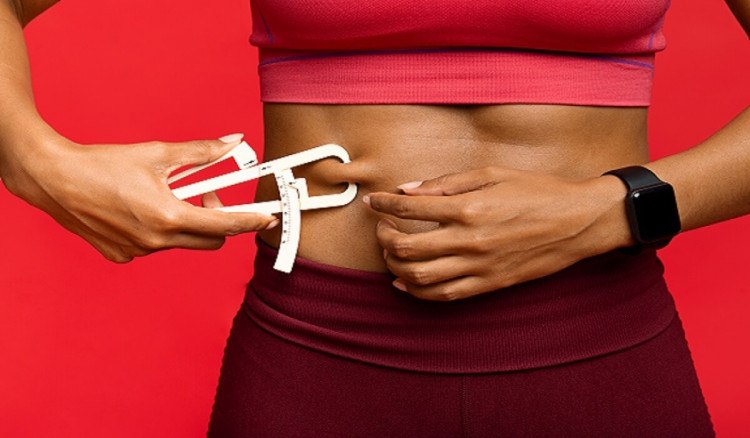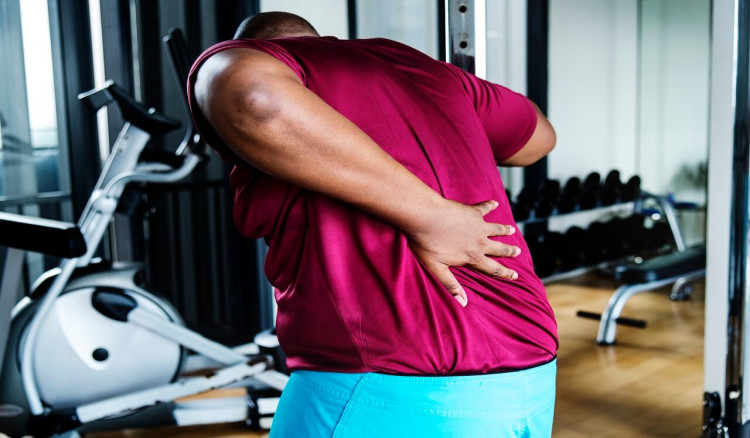
9 Health Benefits Of Exercise
The body was designed to move. It needs water, rest, food and exercise to run smoothly. When you ‘park’ yourself in a chair and don’t exercise, eventually you may ruin your engine.
Many people these days are sick because they haven’t stirred their waters with movement and action. They have become cesspools of disease due to stagnation. Soon they will get to the point where they can’t exercise because their bodies are broken down with heart disease, arthritis and other degenerative diseases.
HEALTH BENEFITS OF EXERCISE
Stirring the waters with exercise has a powerful effect on your health. Here’s how:
Exercise Prevents Cancer
Studies show that approximately one-third of cancer deaths can be linked to diet and sedentary lifestyles (1). Simple movement and exercise decrease the risk of certain cancers such as breast, colon and possibly endometrial and prostate cancers (2).
In 2005, the National Cancer Institute reported that, “physical activity at work or during leisure time is linked to a 50 percent lower risk of getting colon cancer (3).” A study published in the Journal of the American Medical Association found that women who engaged in the equivalent of brisk walking for about one to two hours per week decreased their risk of breast cancer by 18 percent compared with inactive women (4).
Bottom line: exercise goes a very long way in preventing cancer
Exercise Prevents Heart Attacks and Heart Disease
Ironically, exercise rests your heart. The reason is that an inactive person’s heart works much harder than an active person’s heart. How? Two ways.
An active person’s heart usually beats about 60 to 70 times or less per minute. An inactive person’s heart usually beats 80 times or more per minute because it is unconditioned and less efficient. That’s like putting 33 percent more kilometers on your car every time you drive it.
If your heart rate is 60 beats a minute, you will have approximately 84,600 beats in a 24-hour period; however, if your heart rate is 80 beats a minute, it will beat 115,200 times in a 24-hour period. That is quite a bit of extra mileage on your heart each day.
The only time your heart feeds itself with oxygen is between beats. The longer the pause from beat to beat, the more blood flows through the coronary arteries to nourish the heart. Regular exercise eventually enlarges the coronary arteries, improving blood flow.
As the heart grows stronger, it beats fewer times, meaning the heart is at rest more often.
That’s important because of cardiovascular disease is the most common cause of death in the world. Exercise protects you against it. All kinds of studies show that moderate, regular exercise is perhaps the single most important deterrent of heart-related problems.
If you have coronary artery disease, regular exercise will encourage your body to create collateral arteries, which may form a natural bypass around clogged arteries.
Aerobic exercise reduces coronary risk factors. It helps lower the blood pressure, lowers blood triglyceride levels (fat), lowers the bad cholesterol (LDL), raises the good cholesterol (HDL) and may prevent blood clots.
In a study where researchers monitored over 84,000 nurses for eight years, the nurses who exercise regularly had a 54 percent lower risk of both heart attack and stroke when compared to sedentary women (7).
Exercise Improves Lymphatic Flow
The lymphatic system is a major microbe crime-fighter and cellular waste collector in the body. It removes toxins and cellular waste, and it ‘keeps the peace’ by rounding up bacteria, viruses and other bad guys, bringing them to the lymph nodes where they are killed by white blood cells.
Lymphatic fluid is so important that your body contains about three time more lymph than blood. The lymphatic fluid moves around via very small vessels, which usually run alongside small veins and arteries.
But the lymphatic system has a challenge: it is circulated by muscle contractions, not by your heartbeat. When you don’t move, the lymphatic system become sluggish. But aerobic exercise can triple the rate of lymphatic flow. That means that the lymphatic system—your in-house police force and cellular waste collector—does a much better job protecting your body from attack and removing cellular trash.
Exercise Lowers Stress
Regular exercise enhances neurotransmitter production and helps to lower cortisol levels, which helps you feel less stressed.
One researcher conducted an experiment with laboratory rats. He took some rats, shocked them with electrodes, shone bright lights, and played loud noises to them around the clock. At the end of one month, all the rats were dead from stress. He then took another group of rats and made them exercise on a treadmill. After they were well exercised, he subjected them to a month of the same shocks, noises and lights. These rats didn’t die—they ran around well and healthy (9)
If life is stressing you out, it’s time to add exercise to your day. Exercise literally burns off those stress chemicals.
Exercise Promotes Weight Loss and Decreases Appetite
Weight training and calisthenics are exercises that increase your muscle mass, which raises your metabolic rate and enables you to bun more fat. It is perhaps the safest method of raising your metabolic rate, which is the rate at which your body converts food into energy.
Realize that the basal metabolic rate decreases by approximately 5 percent for every decade of life after the age of twenty. People who are sedentary have a significant loss of muscle mass as they age. In these sedentary individuals, there is about a 3 kg loss of muscle mass every ten years past the age of seventy. So by age sixty, most have lost about 12 kg of muscle and replaced it with much more fat.
Aerobic exercise such as brisk walking and cycling is also a very effective way to lose weight and keep it off. Moderate aerobic exercise is also quite effect at decreasing your appetite, but you must be in your target heart rate. Individuals who exercise outside of their target heart rate by exercising too intensely may develop a ravenous appetite an hour or so after exercising due to hypoglycemia or low blood sugar.
Exercise May Help Prevent Diabetes and Help Control Blood Sugar in Diabetics
Exercise holds special benefits for diabetics. By helping muscles to take up glucose from the bloodstream and use it for energy, exercise prevents sugar from accumulating in the blood. By burning calories, exercise helps control weight, which is also an important factor in management of type 2 diabetes.
Exercise is also very important for individuals with type 1 diabetes; it helps to lower insulin requirements. Exercise improves the body’s ability to use insulin.
Exercise Builds Strong Bones
Bone density screening has gone high-tech and, as a result, more and more researchers can now measure the effects of various factors on the bone-building process and prevention of osteoporosis. Their research shows that exercise works better than calcium in building strong bones. “Although calcium intake is often cited as the most important factor for healthy bones, our study suggests that exercise is really the predominant lifestyle determinant of bone strength in young women,” said Tom Lloyd PhD, an epidemiologist with Penn State University College of Medicine, whose findings were reported in the Journal of Pediatrics (10).
Exercise Improves Your Digestion and Promotes Frequent Bowel Movements
Exercise helps prevent constipation (11). Studies have shown that physical activity may help ease digestion problem and problems with GI tract. That’s the conclusion of a study in an October 2005 issue of Clinical Gastroenterology and Hepatology.
The study of 1,801 men and women found that obese people who got some form of physical activity were less likely to suffer from GI problems than inactive obese people. “It is well documented that maintaining a healthy diet and regular physical activity can benefit GI health,” study author Rona L. Levy, a professor at the University of Washington in Seattle, said (12).
Exercise Reduces Depression
Exercise increases serotonin and dopamine levels, which helps to relieve symptoms of anxiety and depression. One study looked at aerobic exercise as a means of treating clinical depression. An aerobic exercise program was compared to standard medication in a group of older adult patients.
Medication relieved symptoms of depression more rapidly at the outset, but aerobic exercise was shown to be equally effective to medication over the course of the four-month study. Since some medications for depression have adverse effects or cease to be as effective with prolonged use, this was an important finding—aerobic exercise may be a very viable long-term therapy (13).
Sources and References
- The Seven Pillars of Health by Don Colbert, MD
- (1) American Cancer Society, “How exercise can lower cancer risk.”
- (2) International Agency for Research on Cancer, IABC Handbooks of Cancer Prevention, Volume 6: Weight Control and Physical Activity (Lyon, France: IABC Press, 2001)
- (3) National Cancer Institute, “Cancer Trends Progress Report—2005 Update, “https://progressreport.cancer.gov
- (4) Anne McTiernan, MD, PhD, et al, “Recreational Physical Activity and the Risk of Breast Cancer in Postmenopausal Women,” Journal of the American Medical Association 290, no. 10 (September 10, 2003): 1331—1336
- (5) Brian McGovern, MD, “MADIT II Trial—Prophylactic Implantation of a Defibrillator in Patients with Myocardial Infarction and Reduced Ejection Fraction,” American Heart Association
- (6) James A. Levine, N.L. Eberhardt, and M.D Jensen, “Role of Nonexercise Activity Thermogenesis in Resistance to Fat Gain in Humans,” Science 283 (January 8, 1999): 212—214
- (7) Judy Ismach, “No Two Genders About It, a Heart is Just a Heart,” Physician’s Weekly, vol. 14, no. 10, February 10, 1997
- (8) Harvard University Gazette, “It’s Never Too Late: Joslin Study Shows Diabetes Sufferers See Major Benefits From Minor Exercise, Weight Loss,” December 11, 2003
- (9) Christiaan Leeuwenburgh et al., “Oxidized Amino Acids in the Urine of Aging Rats: Potential Markers for Assessing Oxidative Stress in Vivo,” American Journal of Physiology: Regulatory, Integrative and Comparative Physiology 276 (January 1999): R128—R135
- (10) Tom Lloyd, PhD, study published in The Journal of Pediatrics, as referenced in Jeanie Lerche Davis, “Got Exercise? Workouts Better for Bone Health,” WebMD, June 11, 2004
- (11) Aetna InteliHealth, “Exercise,” Diseases and Conditions: Digestive
- (12) Robert Preidt, “Exercise Eases Digestion Problems in the Obese,” HealthyDay News, October 4, 2005
- (13) James Blumenthal et al., “Effects of Exercise Training in Older Patients with Major Depression,” Archives of Internal Medicine 159, no. 19 (1999): 2349—2356






Share This Article: